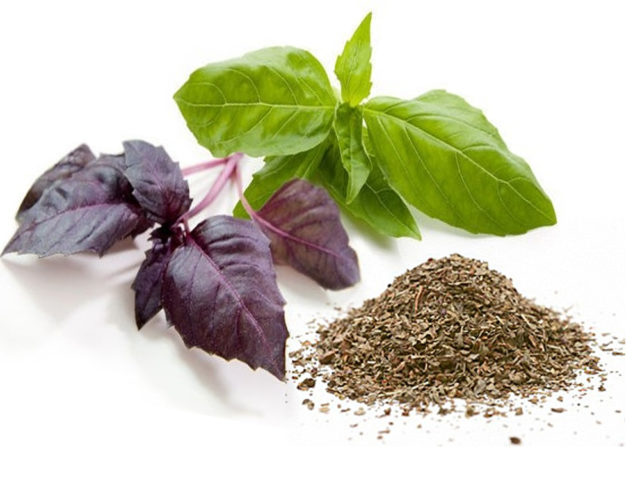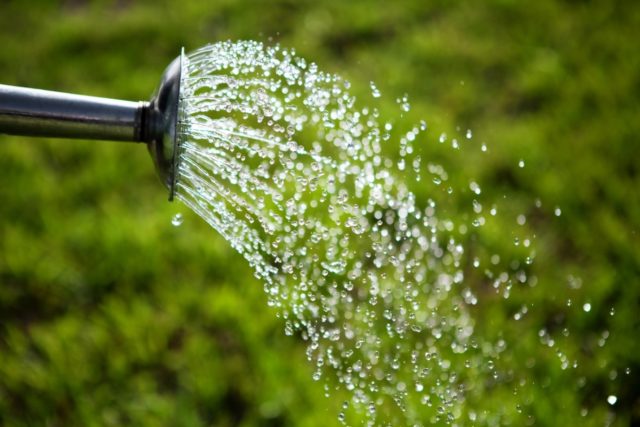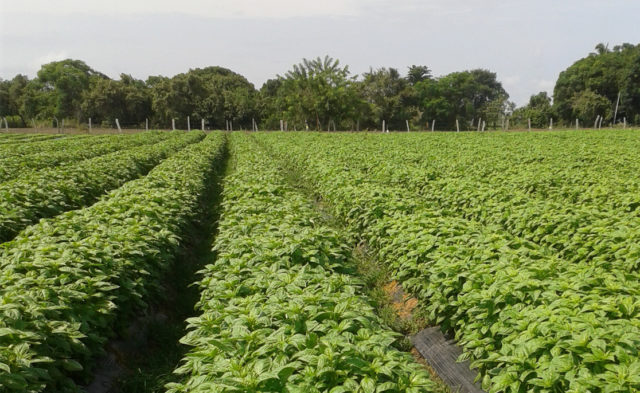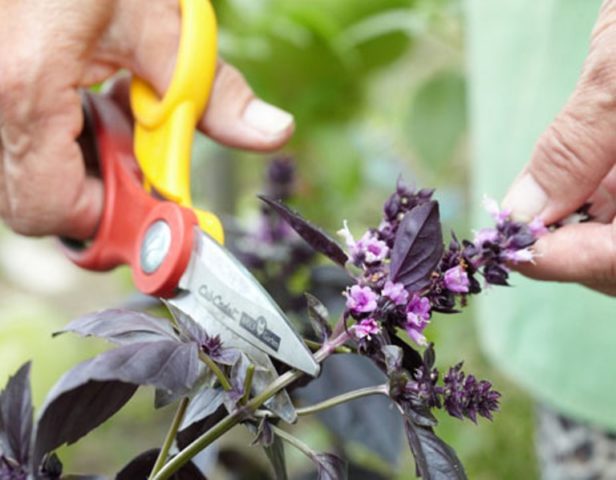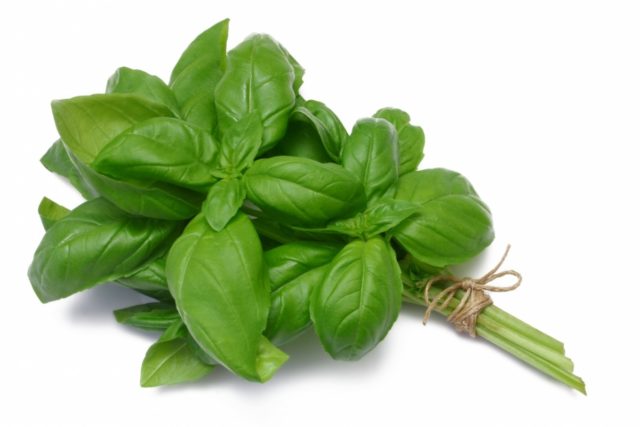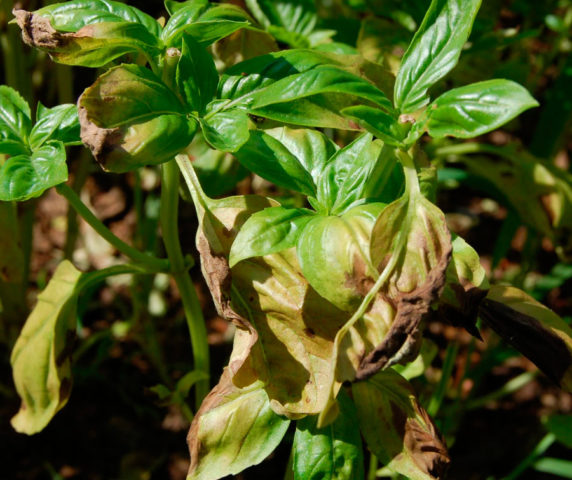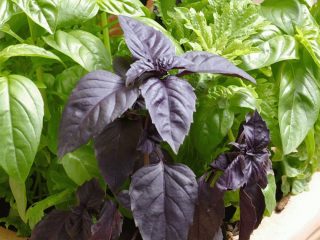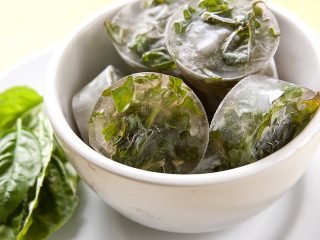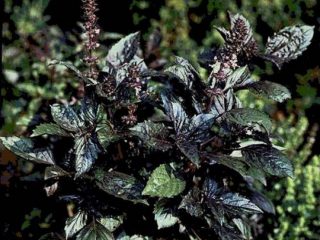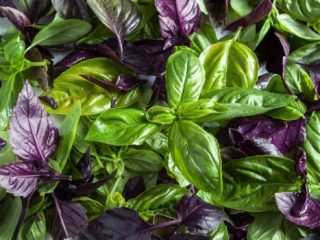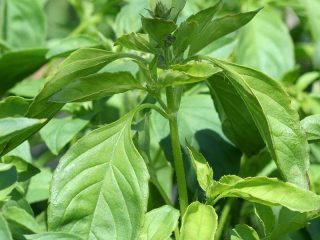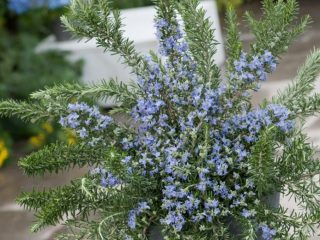Content
Growing and caring for basil outdoors is very simple. Previously, it was planted only in the garden, appreciated as a spicy-aromatic and medicinal crop. Now, thanks to the creation of new, highly decorative varieties, landscape designers have paid attention to basil. Dwarf forms are used for planting on the windowsill in order to have access to fragrant leaves all year round and to improve the air in an apartment or house.
Description and features of the basil
Basil is a genus of shrubs and herbaceous plants, consisting of 69 species, with an annual or long-term life cycle from the Lamiaceae family. The appearance and height differ depending on the belonging to a particular taxon. In culture, the most common varieties of the Basilica:
- fragrant (it is called ordinary, garden);
- mint-leaved (camphor);
- eugenol;
- thin-colored (tulasi).
Garden and ornamental varieties of basil grow up to 20-80 cm in the form of a branchy bush with superficial roots. Leaves can be large or small, smooth, corrugated, covered with hairs. Their color varies from salad to dark purple, the smell is anise, lemon, mint, clove, clove-pepper. Small flowers are collected in 6-10 pieces. in loose brushes.
To date, the question of how to distinguish perennial basil from an annual one is not for domestic gardeners and gardeners even in the most southern regions. The culture is so thermophilic that at temperatures below 12-15⁰ C it stops the growing season. Where summer temperatures rarely exceed 20 degrees, cultivating basil outdoors does not make sense.
Dates for planting basil in open ground
It is possible to plant basil in open ground only after the soil warms up, and the temperature will not drop below 5⁰C even at night. In some regions it is May, but in most it is the beginning or middle of June.
It should be taken into account that the best temperature for the development of basil is above 16⁰ C. The culture is grown in open ground in the south, already in a temperate climate it is worth thinking about protecting it with a film or other shelter. But it is safer to plant annual and perennial basil plants indoors in cool or cold regions.
How to plant basil outdoors
The place for growing basil should be open to sunlight, the soil should be close to neutral acidity and permeable. On heavy soils, the culture grows poorly. The bushes should be protected from strong or cold winds.
The optimal scheme for planting basil in the open field is 30 cm between plants, with a row spacing of 40 cm. In the greenhouse, a denser arrangement of bushes is allowed.
When growing basil for yourself, it is not necessary to allocate a separate area for it. Bushes planted on strawberries, peppers or tomatoes will feel at ease, and neighbors will be protected from pests, and their fruits will be made more aromatic and tasty.
If the site is located on loose fertile black earth, and basil is grown for their own consumption, a depression is dug, a bush is planted in it and watered. All. For a one-year non-fertile culture, this is quite enough.
They act differently if the soil is poor, dense, or if the basil is grown commercially. This implies the desire to get an early harvest or to increase the amount of vegetative mass that can hardly be obtained without the use of fertilizers.
Organic matter is introduced into the soil - humus or compost, and dug up. This increases the fertility and permeability of the soil. In an annual and bush perennial basil in the first year of life, the root system is weak, so the holes are shallow. Young plants are planted, slightly deepening, and watered abundantly. You can add a teaspoon of complex fertilizers to each well, or fertilizers specially designed for aromatic plants and greens.
How to grow basil outdoors
If a separate area is allocated for growing basil and caring for it in the open field, then good predecessors will be:
- legumes - beans, peas, lentils, etc .;
- pumpkin - cucumber, zucchini, squash, pumpkin;
- nightshade - potatoes, tomato, eggplant, pepper.
Outdoor watering
Basil does not like watering with cold water. But often in the garden there is no large container in which the liquid is heated. Then all open ground crops are irrigated with water from a well or pipeline, including basil. This, of course, is not good, but you should not panic. And also urgently expose buckets of water to the sun, or heat it in pots to dilute the cold one, and then water it by hand. Just irrigate the basil in the morning - then the temperature of the soil and water differs less.
The frequency of watering is determined by each gardener independently. On the one hand, the culture tolerates some "abstinence" in the consumption of moisture well, it even adds flavor to it. On the other hand, basil grown in an annual culture is still a herb, and with a weak root system, strong overdrying can destroy it.
In the heat, the plant in the open field is watered more often, in cool weather - rarely. What matters is the structure and permeability of the soil. Loam, heavy or organic-rich soils retain water better, sand, black peatlands require frequent irrigation. On average, basil is watered in the summer 1-2 times a week, but not abundantly and only after the soil dries up (but does not turn to stone from lack of moisture).
Watering the basil after planting in open ground
Growing and caring for basil outdoors begins immediately after planting. Until the plant takes root, it needs to be watered often, standing in the sun or warm water.
This should be done every other day, and if the weather is hot and the soil dries up quickly - once a day. Abundant watering will not lead to anything - the liquid evaporates quickly, and the weak root, located in the upper layers of the soil, again requires moisture. It is enough to give 0.5 liters of water for each bush.
The signal that the basil has taken root, and you can switch to the usual irrigation system, will be the moment when new leaves and young shoots appear.
Does the culture need feeding
Watering and feeding basil is an interesting question. If you overdo it with moistening the soil (without bringing it to the state of a swamp), there will be more greenery, but the aroma is noticeably weaker than it could be. But in any case, it will be sufficient both for culinary specialists and for those who like to treat themselves or loved ones with smells.
But with feeding things are a little different.Many types of basil in their homeland are perennial crops, the supply of nutrients in the plant is initially sufficient to survive a "bad" year without losing vitality. Most of the energy is spent on flowering and setting seeds, but this is exactly what gardeners do not need, the buds break off as soon as they appear!
Basil is able to give green mass for salads, freezing, spices, treatment and aromatherapy without any additional dressings, and this will be the best raw material!
But if you feed the basil at least 2-3 times during the growing season in the open field, the bush will be much larger. With intensive fertilization, the yield of marketable green mass will increase by 3-4 times. The scent of the leaves will be strong and rich, but it will be very “undersized” in comparison with basil, which is grown only in water.
Collecting green mass is carried out before flowering or at the beginning. If you do not allow the buds to be tied, the nutrients contained in the soil will suffice for the basil until the end of the season.
Fertilizers of mineral origin tend to convert to nitrates. If the doses are small, this is not a big deal. But basil just doesn't need as much nitrogen as it gets into its organs when feeding every 2 weeks. He begins to "fatten" - to build up a lot of greenery, poorly forms buds. Like, what's wrong with that? Excess nitrate is poorly eliminated from leaves and shoots. Of course, if the herb is used little by little, only as a seasoning, and even in dried form, there is no problem. But as a medicine, such basil will not bring benefits. It is better not to use it in aromatherapy either. Fresh should be eaten carefully.
Growing basil commercially without top dressing is not profitable. It takes a long time to reach a state where shoots can be cut off and does not belong to early ripening products. Of course, you can pull out 1-2 leaves on a salad or in a marinade even a week after planting. But commercial pruning begins, depending on the variety, 60-90 days after germination!
It is correct to add fertilizer to the soil when planting basil, and even better - humus and ash. When the cut is done, the crop is fed with fermented mullein or green manure. So the basil will grow new shoots faster.
Of course, you can replace such "delights" with a complex mineral feeding, or give it every 2 weeks, as many sources advise. But the aroma of basil will be slightly different, it (both aroma and basil) will lose its healing properties, and for those who are fond of Ayurveda or other similar practices, it will be useless.
Weeding and loosening the soil
Basil is very fond of shallow loosening of the soil. If you do it 1-2 times a week, you will need to water the culture less, and the weeds will simply stop growing. It is very convenient to form bushes for this, cutting off the lower branches for food first of all - then you will not have to "dance" around the plant while loosening.
Removing flowers
Flowers should only be left on the plants from which seeds are to be obtained. Naturally, they do not touch the basil that is grown for decorative purposes. In the rest of the bushes, the buds are plucked out as soon as they appear.
Topping
Basil responds very well to pinching. When planting in open ground, you can remove not only the top of the main shoot, but also shorten the side ones (if any). When the plant takes root and grows, the operation should be repeated. This will increase the yield of green mass without any fertilizers by about 2 times.
In the future, when plucking buds, collecting leaves for salad or marinade, part of the shoots that are excessively elongated compared to other should be removed.
Reproduction
Basil propagates by seedling, sowing seeds in the ground (April) and vegetatively. Twigs root well in water, sand or wet peat. It is better not to count on self-seeding - even in the central regions of Ukraine, after a warm winter, only a few random shoots can hatch.
Harvesting
First you need to decide what to collect - greens for sale or freezing, or raw materials for drying. Young shoots 10-12 cm long can be cut up to 5 times per season. At the same time, the maximum yield of green mass per square meter of basil plantings is 1.5 kg. Pruning is carried out simultaneously for all the bushes as the branches grow. Then the plants are fed.
For subsequent drying, basil is harvested at the beginning of flowering, since then most of the essential oils are concentrated in the leaves. It is better to prune in the budding phase than to be late. Well-opened flowers draw away all the substances accumulated by the plant (essential, for example, to attract bees).
Basil is dried by tying the shoots in bunches and hanging in a dry, hot, well-ventilated room without direct sunlight. You can tear off the leaves and spread them out in a thin layer. But then you will often have to stir them up and turn them over. To preserve all essential oils, the drying temperature should not exceed 35 degrees.
Basil diseases and pests
Basil does not belong to crops that often get sick, and pests generally prefer to bypass not only its bushes, but also those that just grow nearby. This is often used by advocates of organic farming to ease the fight against many crop-destroying insects.
If the basil grows freely, it is watered in moderation, it is unlikely to get sick. Thickened plantings and high humidity are more often a problem in greenhouses than in open field. But if the culture is planted without taking into account the growth of the bush, next to the plants requiring frequent watering, problems may arise. Basil will also suffer in too rainy summer, especially on dense soil. He can get sick:
- Fusarium... The stem will become thin, brown, then the top will dry out, the bush will gradually fade, despite watering and loosening the soil.
- Gray rot... This fungal disease begins to develop on the damaged parts of the plant. For example, if, when collecting leaves for salad or marinade, you do not carefully cut them off with scissors or pinch them off, but simply pull them, you can severely injure the plant. Gray rot manifests itself in the appearance of first white and then gray cannon on infected shoots.
In both cases, the diseased plant is simply destroyed, and as soon as possible. Preventive spraying of basil is not carried out, it is simply planted freely, it is not poured over, individual leaves and twigs are pinched off or trimmed neatly.
Conclusion
Growing and caring for basil outdoors is much easier than it might seem after reading any article on the Internet. If you only need a few bushes, they can be planted in place of the fallen tomato seedlings and just collect the leaves as needed.
